The Good
- Bold exterior design
- Bold interior
- Comfortable
The Bad
- Occasionally bouncy ride
- Unrefined in places
The DS 7 Crossback is a French-flavoured alternative to the Jaguar E-Pace, BMW X1, Volvo XC40 and Audi Q3. We drove the small-ish SUV around Ascot, complete with the BlueHDi 130 and BlueHDi 180 diesel engines, to see how it stacks up.
You may know that DS Automobiles was Citroen’s premium spin-off and that the first car to actually wear the badge, known as the DS 19, arrived in 1955. But did you know DS became its own entity in 2014 and that the DS7 Crossback is the very first standalone model? Have a virtual pat on the back if so.
Relying on past glory of the DS 19 et al is a major part of the DS plan, with French chic, luxury and sophistication from models bygone being used in the DS 3, DS 4 Crossback and DS 5. The problem is that none of those offerings were never particularly well received, nor did they sell very well (but sales are on the up).
Can the DS 7 Crossback really live up to that famous ‘avant garde’ spirit DS is so keen to associate itself with? We drove the BlueHDi 130 and BlueHDi 180 diesels in EAT8 eight-speed automatic and six-speed manual forms at the UK launch in Berkshire to find out.
DS 7 Crossback review: What are we looking at?
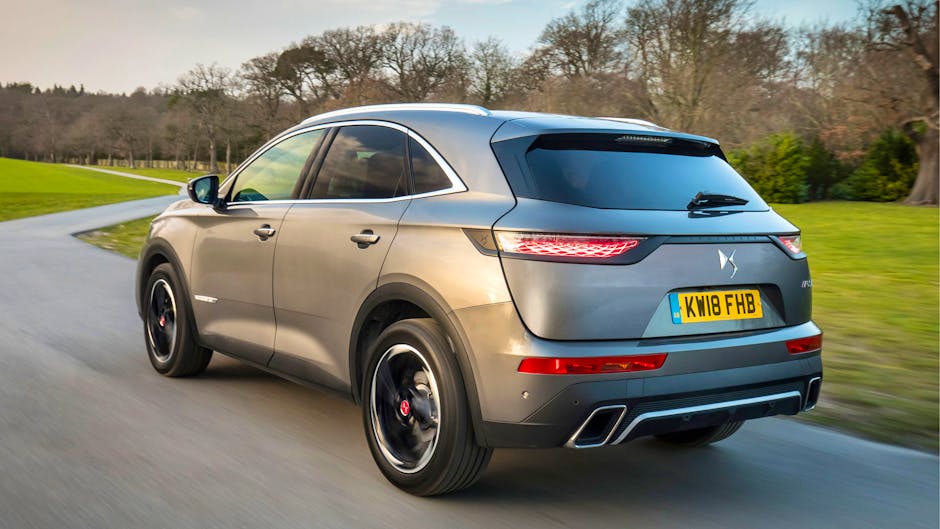
Smaller SUVs are popular these days so it is hardly surprising that DS added one to the range, although work started out on the DS 7 Crossback in 2014 when their popularity was only starting to bloom.
The DS 7 Crossback is based on the Peugeot 3008’s EMP2 platform, but is longer although not so long it gives the seven-seater 5008 anything to worry about. Think a tad bigger than a Volvo XC40, Jaguar E-Pace and BMW X1.
Power is sent to the front wheels in all cases, reducing its effectiveness as an off-roader. You will have to wait until 2019 for the 296bhp hybrid if you crave all the traction ─ and have a spare £50,000.
When it comes to equipment, all cars get 18-inch alloy wheels, LED rear lights, powered tailgate, keyless entry, lane departure warning, cruise control and an eight-inch touchscreen display with the usual Bluetooth and USB connectivity to name the more impressive highlights.
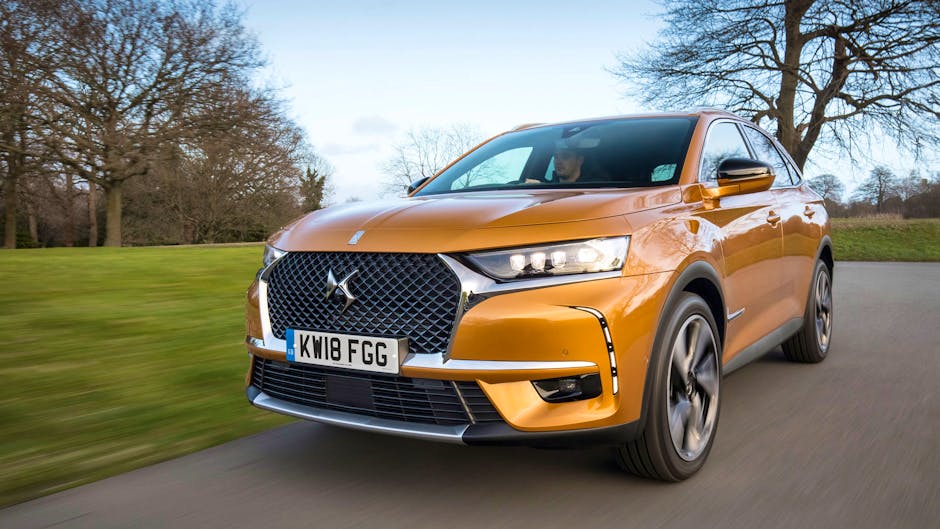
If the entry-level Elegance trim level (from £28,050) is too basic for you, Performance Line (from £31,435) provides 19-inch alloys, electrically folding mirrors, 12.3-inch digital display behind the steering wheel, 12-inch touchscreen in the centre console with navigation and Alcantara upholstery. On the outside, meanwhile, are some sporty touches such as black detailing.
Above that is Prestige (from £34,435), which swaps black detailing for chrome on the outside and you get front parking sensors, Nappa leather upholstery, ventilated and massaging front seats, wireless phone charging and a reversing camera.
You will need to dig ultra-deep for the DS 7 Crossback in Ultra Prestige, which starts from £43,185. For this, you get 20-inch alloys, extra safety technology, panoramic sunroof, Focal sound system and adaptive cruise control.
Other extras include Active Scan Suspension. This is DS’s attempt at the clever suspension systems you see on the likes of BMW and Mercedes and shares the same ability to read the road ahead and adjust the suspension accordingly. Why? To make life smoother for you.
Then there is the Night Vision Cam (£1,600), which uses a front-facing infrared camera to warn you of any dangers in low-light conditions. During a 40-minute night drive around Windsor, the system missed a few glaring hazards but then it also highlighted a pedestrian who was talking a leisurely stroll in total darkness. It is, therefore, more than just a way of showing off to your nerdier friends or fans of the movie Predator.
Before you ask, no you cannot drive with the headlights off as that disables the Night Vision Cam. So no stealthy (probably unsafe) motoring for you.
DS 7 Crossback review: Good to drive?
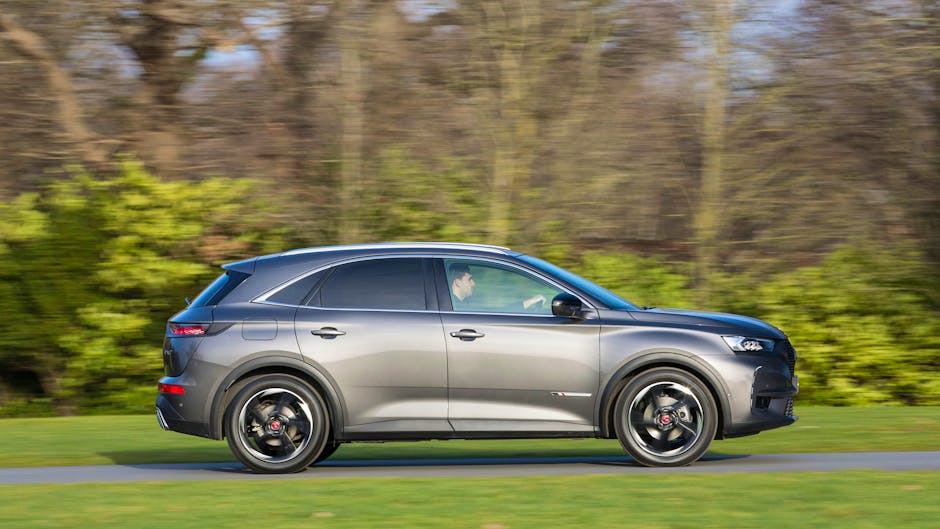
If we had to use one word to describe the way the DS 7 Crossback drives, it would be unremarkable. Like the E-Pace and other compact SUVs, the enjoyment factor is sorely lacking. It just plods along in a reasonably quiet and reasonable comfortable manner that neither stands our nor offends.
Moderate body roll and decent grip makes the SUV capable of going round corners faster than it needs to. Unfortunately, the only feeling you get from the steering is that of the noticeable vibration from the diesel motor up front, which feels odd in what is sold as a premium vehicle.
A BMW or Volvo equivalent works out smoother and more refined than the DS 7 Crossback. It is, however, still capable of easing over the majority of undulations without kicking up a fuss. Our biggest complaint is that it can get overly bouncy during moments of quick elevation changes.
The 178bhp (180PS) diesel never feels particularly gutsy despite having 295lb/ft (400Nm) of torque at 2,000rpm, but there is more than enough punch to pull out at a busy junction or overtake a slowpoke Sunday driver. In reality, the 129bhp (130PS) feels nearly as quick without costing as much to buy and as much to run (more on that later).
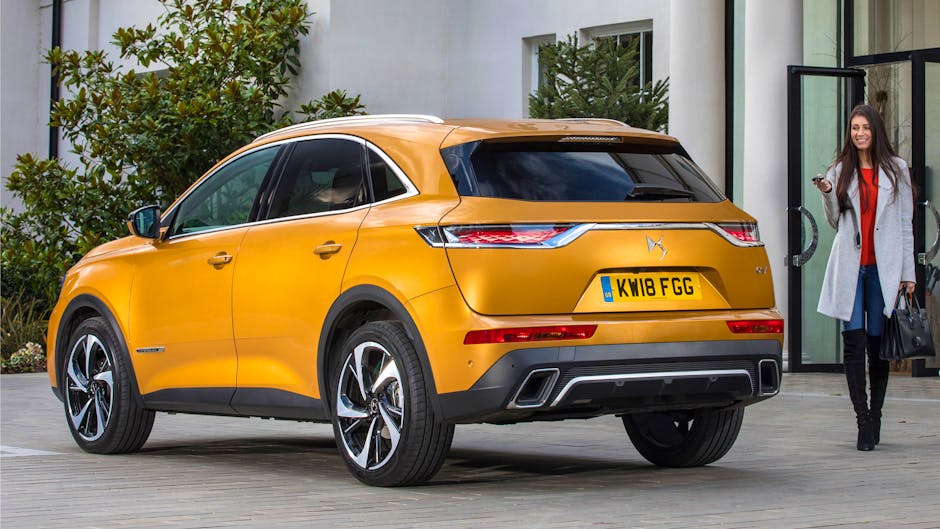
If you do crave a level of satisfaction from the DS 7 Crossback, the six-speed manual is the way to go as it is enjoyable to use and perfectly situated just ahead of the central armrest for some lazy shifting action. Not only that, the ability to change gears yourself and lower horsepower makes it easier to keep the diesel grumbles to a minimum.
Most SUV buyers will, of course, want the car to do everything for them for maximum convenience, which is where the competent EAT8 automatic shines. Never once did it prove anything but smooth and imperceptible during our test drive.
Unfortunately there was no option to drive the remaining engine available at launch, which is the PureTech 225 with 222bhp. Going petrol means a 0-62mph time of 8.3 seconds and a top speed of 141mph so it will definitely feel punchier and potentially quieter and more refined if lesser powerful PureTech goodness is anything to go by.
DS 7 Crossback review: The not-so-good stuff?
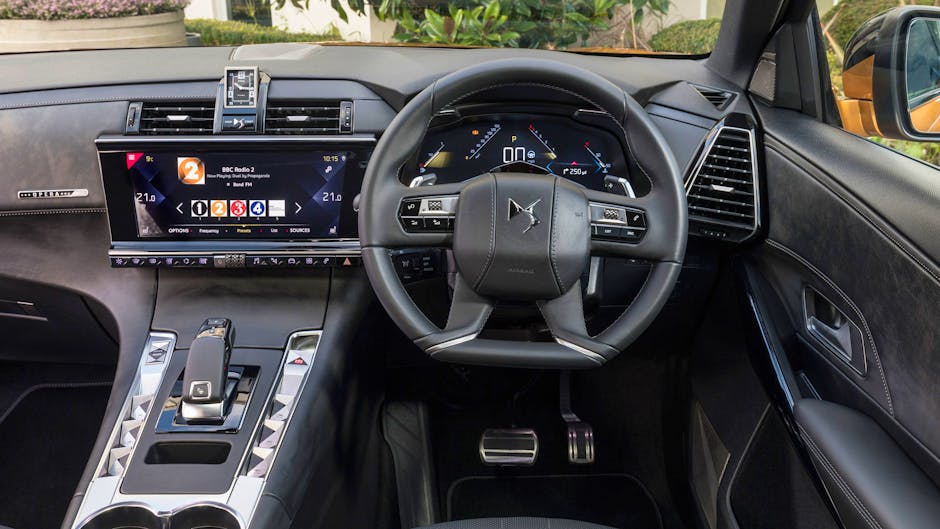
The exterior design of the DS 7 Crossback is very pleasing. Certainly more so than the Audi Q3, which it appears to borrow a few styling tips from. The same can be said of the interior, too, which has a 3008-esque i-Cockpit vibe about it albeit with a less minimilastic, more lavish vibe.
We particularly like the centrally-located shiny bespoke buttons that control the hazards and windows, which feature the same honeycomb texture as the fancy rear lights, and the side air vents that point directly at you. You also get soft-lined door pockets for storing things you want to avoid damaging and, on higher spec models, front lights with rotating bulbs and a clock that folds up at ignition. Because nothing says opulence like an analogue timepiece.
Some hard-to-miss cheapo plastics do catch the eye, but they really only stand out because the rest of the cabin is so thoroughly pleasing from Performance trim upwards (there were no Elegance examples at the launch event). It helps that the seats are well-designed, the Focal speakers kick out a powerful sound and that the infotainment system is one of the most stylish on the market.
That style does unfortunately come at the expense of usability. Changing something as basic as the air temperature, for instance, requires at least two button presses ─ a process that saps your attention for too long and causes the navigation map to disappear from view. A physical control to compliment the touchscreen, as you get in rival German SUVs, would prove beneficial.
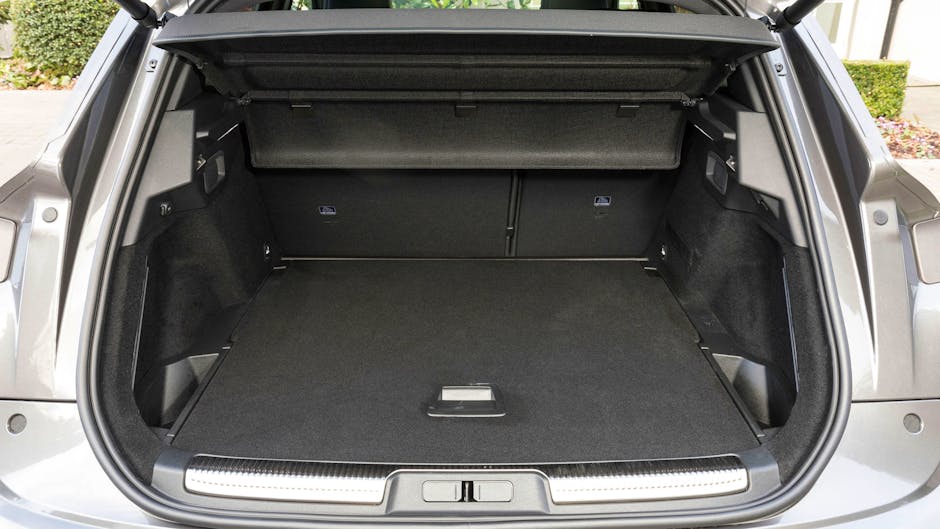
Then there is the shallow floor, which makes the rear feel a little more cramped than it should. Leg room is actually decent, however, and there is no transmission tunnel in the middle to upset anyone who draws the short straw.
Head room is generous, too, with adequate space provided for those around six-foot – even if you spec the panoramic sunroof. Still, really tall families would be best avoiding that extra sunlight as it does eat into the interior height dimension.
Luckily for hoarders, the DS 7 Crossback offers an impressive 555 litres of boot space if you keep the boot floor in its usual place and the rear seats up, or 1,752 litres if you fold the rear seats flat. The X1 and E-Pace manage 505 and 577 litres, respectively.
DS 7 Crossback review: What about economy and efficiency?
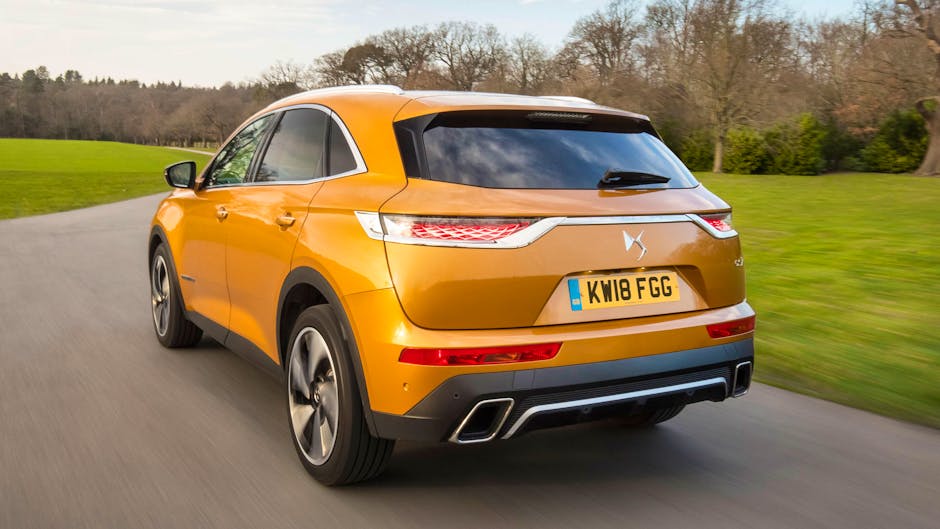
Going petrol could work out best if the government keeps up the scaremongering, but the diesels are much better in terms of fuel economy. Think 68.9mpg combined for the BlueHDi 130 manual and 57.6 combined for the BlueHDi 180 automatic.
CO2, meanwhile, is pushed out the exhaust to the tune of 107g/km for the BlueHDi 130 diesel and 128g/km for the BlueHDi 180. That makes the former our pick of the bunch, especially as it is cheaper to buy in the first place so you can save some cash or jump up a spec level and still save some cash.
As for the PureTec 225 petrol, fuel economy and CO2 work out at 48.7mpg combined and 134g/km, respectively.
DS 7 Crossback review: Should I buy one, then?
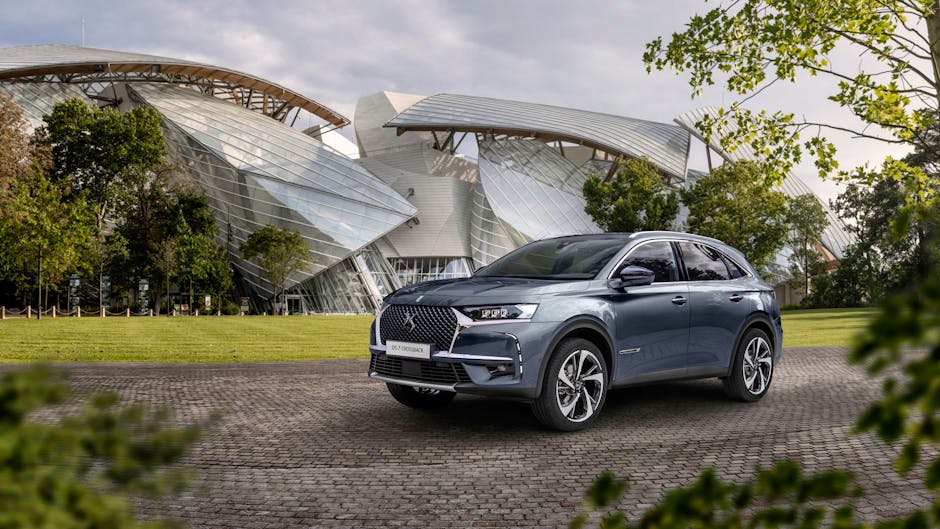
The DS 7 offers everyday practicality and a harmless drive, but – like the Jaguar E-Pace – it suffers from a mild case of style-over-substance-itus. Simply put, you can get superior off-roading ability, handling, luxury and refinement from other small-ish SUVs – sometimes for similar or less money.
We would really struggle to spend upwards of £44,000 on one, that’s for sure, especially knowing that DS is a relatively unknown entity in the UK (which will likely affect depreciation) and that its rivals offer all-wheel drive as standard.
If you are really sold on some stylish ‘avant garde’ motoring though, go for the smaller diesel and keep the extras to a minimum because the balance of expenditure versus chic is more favourable.
Specification
| Engine | 1.5-litre BlueHDi / 2.0-litre BlueHDi diesel |
|---|---|
| Power | 129bhp / 178bhp at 3,750rpm |
| Torque | 221lb/ft (300Nm) at 1,750rpm / 295lb/ft at 2,000rpm |
| Acceleration | 0-62mph in 10.8 seconds / 9.4 seconds |
| Top speed | 121mph / 134mph |
| Emissions | 107g/km / 128g/km of CO2 |
| Economy | 68.9mpg / 57.6mpg (combined) |
| Price | From £28,050 |
Leave a Reply